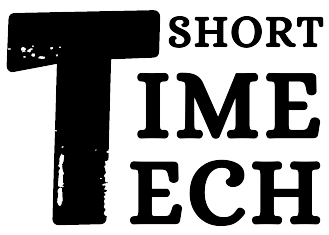Wearable technology has evolved significantly over the past decade, transforming from basic fitness trackers to sophisticated devices that offer a wide range of functionalities. As we move through 2024, smartwatches and fitness trackers are set to experience further advancements that will enhance their capabilities and integrate more seamlessly into our daily lives. This article explores the latest trends and innovations in wearable technology, focusing on what to expect from smartwatches and fitness trackers in 2024.
1. Advanced Health Monitoring Capabilities
One of the most significant trends in wearable technology is the enhanced focus on health monitoring. In 2024, smartwatches and fitness trackers are expected to offer even more advanced health tracking features that go beyond basic heart rate and step counting.
- Continuous Glucose Monitoring: Newer models are incorporating continuous glucose monitoring (CGM) sensors that provide real-time insights into blood glucose levels. This feature is particularly valuable for individuals with diabetes or those looking to manage their blood sugar levels more effectively.
- Improved ECG and Blood Pressure Monitoring: The ability to monitor electrocardiograms (ECG) and blood pressure is becoming increasingly sophisticated. Enhanced sensors and algorithms are providing more accurate readings, enabling users to track their cardiovascular health more reliably.
- Advanced Sleep Tracking: Sleep tracking has also seen significant improvements. Wearables now offer detailed insights into sleep stages, quality, and potential sleep disorders. Features like sleep apnea detection and personalized sleep recommendations are becoming standard.
2. Enhanced Connectivity and Integration
The integration of wearables with other smart devices and ecosystems is a major focus in 2024. This enhanced connectivity allows for a more seamless user experience and greater functionality.
- Integration with Smart Home Systems: Wearables are increasingly being designed to interact with smart home systems. For example, you can control smart home devices such as lighting, thermostats, and security systems directly from your smartwatch. This integration provides added convenience and enhances the overall smart home experience.
- Improved Cross-Platform Compatibility: Many wearables now offer better compatibility with different operating systems and devices. This means users can seamlessly connect their wearables with a wider range of smartphones, tablets, and computers, ensuring a more cohesive experience across different platforms.
- Enhanced Communication Features: Advanced communication features, such as built-in LTE and 5G capabilities, are becoming more common in smartwatches. This allows users to make calls, send messages, and access the internet without needing to carry their smartphones. Additionally, improved voice assistant integration enables more intuitive interaction with devices.
3. Design Innovations and Personalization
Wearable technology is also experiencing significant advancements in design and personalization, making these devices not only more functional but also more stylish and customizable.
- Customizable Watch Faces and Bands: Users can now choose from a wide range of customizable watch faces and bands to match their personal style. Whether it’s a classic analog look or a modern digital display, users can tailor their devices to reflect their preferences. This trend extends to interchangeable bands made from various materials, including eco-friendly options.
- Sleeker and More Comfortable Designs: Advances in materials and technology are leading to sleeker and more comfortable designs. Thin, lightweight, and durable materials enhance comfort for all-day wear. Additionally, innovations in display technology, such as microLED and flexible OLED screens, contribute to a more refined and attractive appearance.
- Personalized Health Insights: Personalization extends beyond aesthetics to the functionality of the devices. Wearables now offer personalized health insights and recommendations based on individual health data and lifestyle patterns. This customization helps users set and achieve personal health and fitness goals more effectively.
Conclusion
As we look at wearable technology in 2024, the evolution of smartwatches and fitness trackers is marked by advanced health monitoring capabilities, enhanced connectivity, and innovative designs. These developments are making wearables more integrated into our daily lives, offering valuable health insights, seamless interaction with other smart devices, and a high level of personalization. Whether for health management, smart home integration, or personal style, the advancements in wearable technology are set to transform how we interact with and benefit from these devices. Embracing these innovations will help users stay connected, informed, and stylish while reaping the benefits of cutting-edge technology.

